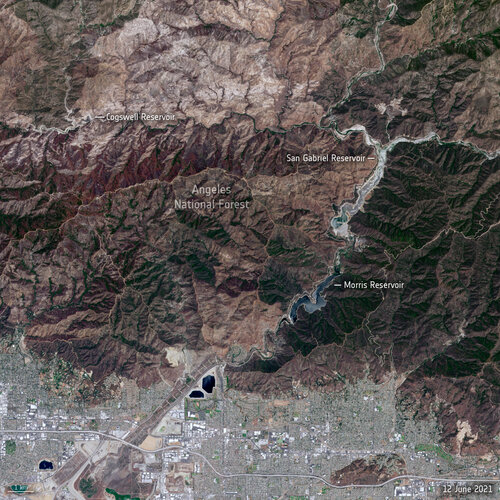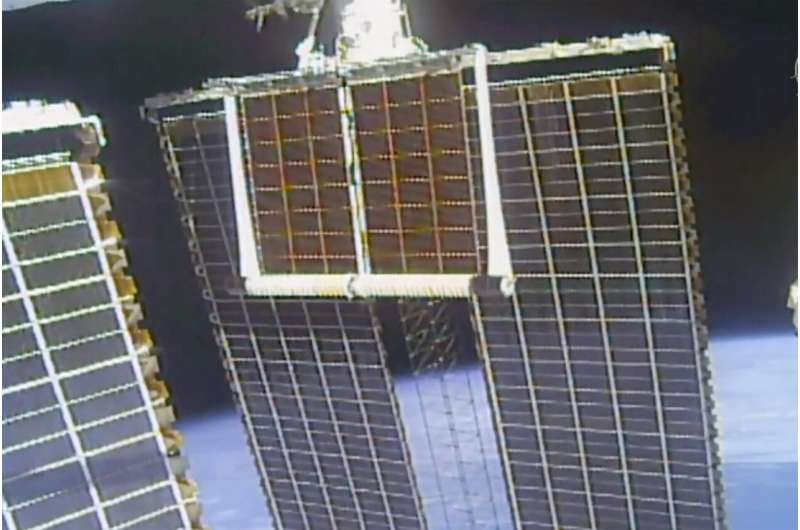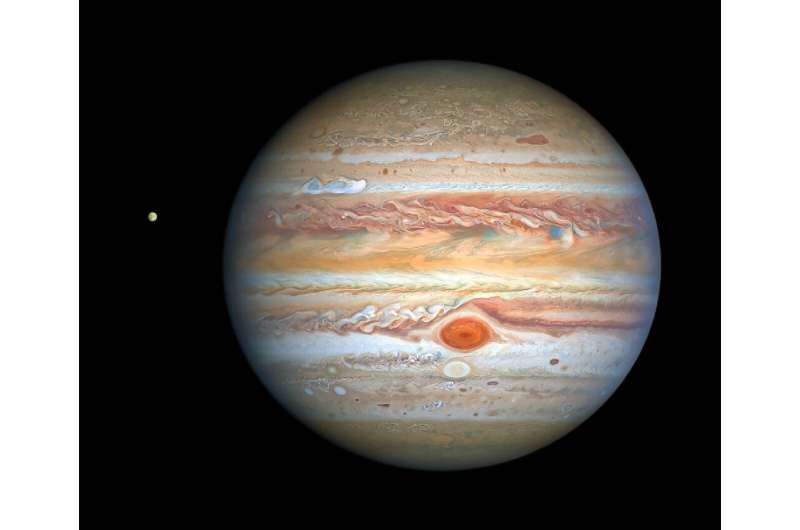
Copernical Team
Stark reality of Californian drought from space
 Image:
Stark reality of Californian drought from space
Image:
Stark reality of Californian drought from space Take part in ESA’s Space App Camp

ESA is inviting up to 25 committed mobile app developers and specialists in artificial and machine learning related to observing Earth from space to join this year’s Space App Camp, which will be a virtual event over eight weeks, from 20 July to 20 September.
Take 2: Spacewalking astronauts install new solar panel

Spacewalking astronauts equipped the International Space Station with the first in a series of powerful new solar panels Sunday, overcoming suit problems and other obstacles with muscle and persistence.
It took two spacewalks for French astronaut Thomas Pesquet and NASA astronaut Shane Kimbrough to install and unfurl the panel to its full 63 feet (19 meters) in length.
The solar wing unrolled like a red carpet once the final set of bolts was released, relying solely on pent-up energy. The slow but steady extension took 10 minutes, with station cameras providing live TV views.
"It is beautiful," Pesquet called out.
"Well done, both of you," Mission Control replied once the operation was complete.
Orbital Sidekick announces upcoming launch of its most powerful satellite: Aurora
 Orbital Sidekick (OSK) announced the upcoming launch of its newest and most powerful hyperspectral imaging satellite: "Aurora." Aurora leverages OSK's previous experience collecting and analyzing hyperspectral data to provide action-oriented insights on the world around us, with a core focus on sustainability.
The Aurora satellite will serve OSK's customers in the energy, mining, and defen
Orbital Sidekick (OSK) announced the upcoming launch of its newest and most powerful hyperspectral imaging satellite: "Aurora." Aurora leverages OSK's previous experience collecting and analyzing hyperspectral data to provide action-oriented insights on the world around us, with a core focus on sustainability.
The Aurora satellite will serve OSK's customers in the energy, mining, and defen Lockheed Martin-Built Next Generation GPS III Satellite Propels Itself to Orbit
 The fifth Global Positioning System III (GPS III) satellite designed and built by Lockheed Martin is now headed to its orbit 12,550 miles above earth. This marks another step in supporting the U.S. Space Force's GPS satellite constellation modernization efforts.
Launched earlier this week, GPS III Space Vehicle 05 (GPS III SV05) is the latest next-generation GPS III satellite, a warfightin
The fifth Global Positioning System III (GPS III) satellite designed and built by Lockheed Martin is now headed to its orbit 12,550 miles above earth. This marks another step in supporting the U.S. Space Force's GPS satellite constellation modernization efforts.
Launched earlier this week, GPS III Space Vehicle 05 (GPS III SV05) is the latest next-generation GPS III satellite, a warfightin Novel chirped pulses defy 'conventional wisdom'
 The 2018 Nobel Prize in Physics was shared by researchers who pioneered a technique to create ultrashort, yet extremely high-energy laser pulses at the University of Rochester.
Now researchers at the University's Institute of Optics have produced those same high-powered pulses - known as chirped pulses - in a way that works even with relatively low-quality, inexpensive equipment. The new w
The 2018 Nobel Prize in Physics was shared by researchers who pioneered a technique to create ultrashort, yet extremely high-energy laser pulses at the University of Rochester.
Now researchers at the University's Institute of Optics have produced those same high-powered pulses - known as chirped pulses - in a way that works even with relatively low-quality, inexpensive equipment. The new w NASA reports trouble with Hubble Space Telescope

The Hubble Space Telescope, which has been peering into the universe for more than 30 years, has been down for the past few days, NASA said Friday.
The problem is a payload computer that stopped working last Sunday, the US space agency said.
It insisted the telescope itself and scientific instruments that accompany it are "in good health."
"The payload computer's purpose is to control and coordinate the science instruments and monitor them for health and safety purposes," NASA said.
Fresh group of astronauts readying for orbit
 As construction of China's space station gradually unfolds, the country needs fresh vigor to carry out the ambitious endeavor.
Currently, the Astronaut Center of China in Beijing is training the third group of Chinese astronauts.
The 18 new astronauts-17 men and one woman-are in three groups: seven will become spacecraft pilots, another seven will eventually be space flight engineers
As construction of China's space station gradually unfolds, the country needs fresh vigor to carry out the ambitious endeavor.
Currently, the Astronaut Center of China in Beijing is training the third group of Chinese astronauts.
The 18 new astronauts-17 men and one woman-are in three groups: seven will become spacecraft pilots, another seven will eventually be space flight engineers Astronauts arrange new 'home' in space
 Astronauts on board the core module of China's space station have started to prepare their orbiting residence for operations over the next three months.
As soon as the three crew members-Major General Nie Haisheng, Major General Liu Boming and Senior Colonel Tang Hongbo-floated into the core module, named Tianhe, or Harmony of Heavens, on Thursday afternoon, they started to configure the e
Astronauts on board the core module of China's space station have started to prepare their orbiting residence for operations over the next three months.
As soon as the three crew members-Major General Nie Haisheng, Major General Liu Boming and Senior Colonel Tang Hongbo-floated into the core module, named Tianhe, or Harmony of Heavens, on Thursday afternoon, they started to configure the e Astronauts may get their spleen removed before long-distance flights
 Radiation is considered one of the main issues facing space agencies in their bid to send a manned flight to Mars, according to Russian scientists from the Institute of Biomedical Problems.
Researchers from Russia and the US have been debating whether it will be necessary to remove the spleen - the organ which primarily removes old or damaged red blood cells from the body - from astronauts
Radiation is considered one of the main issues facing space agencies in their bid to send a manned flight to Mars, according to Russian scientists from the Institute of Biomedical Problems.
Researchers from Russia and the US have been debating whether it will be necessary to remove the spleen - the organ which primarily removes old or damaged red blood cells from the body - from astronauts 